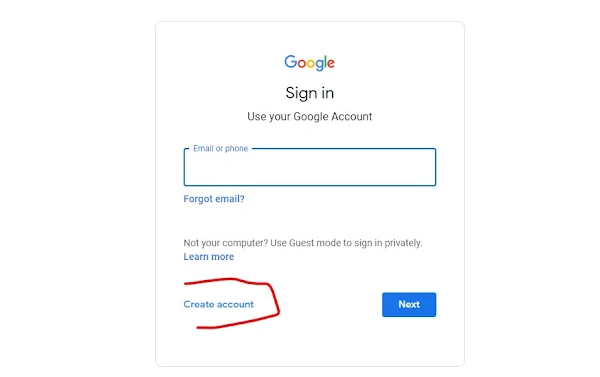Step-by-Step Guide to Installing and Using WebRTC Extensions
WebRTC extensions can be used to improve the quality of audio and video calls, add new features such as screen sharing and file transfer, and even provide security and privacy enhancements.

|
| WebRTC extensions |
What is WebRTC Extension?
WebRTC extension is a browser add-on that allows you to control the WebRTC API in your browser. This means you can enable or disable WebRTC, as well as control specific features of WebRTC, such as the ability to use your microphone or camera.
WebRTC is a technology that allows browsers to communicate with each other in real time. This can be used for things like video chat, voice chat, and file sharing. WebRTC is a relatively new technology, but it is becoming increasingly popular.
There are a number of benefits to using WebRTC extensions. For example, you can use them to:
-
Protect your privacy: WebRTC can expose your IP address, which can be used to track you online. WebRTC extensions can help you to protect your privacy by disabling WebRTC or by hiding your IP address.
-
Improve performance: WebRTC extensions can improve the performance of WebRTC applications. For example, they can reduce the amount of data that is transferred between browsers, which can improve the quality of video and audio calls.
-
Customize your experience: WebRTC extensions allow you to customize your experience with WebRTC. For example, you can use them to enable or disable specific features of WebRTC, or to change the settings for things like the quality of video and audio.
Step-by-Step Guide to Installing and Using WebRTC Extensions
WebRTC extensions offer a wide range of features to enhance your web communication experience. In this chapter, we will provide you with a step-by-step guide on how to install and use WebRTC extensions, ensuring you can harness their full potential.
Read Also: What is WebRTC Extension?
Step 1: Choosing the Right WebRTC Extension
Before diving into the installation process, it's crucial to choose the right WebRTC extension for your needs. Consider the features you require, such as screen sharing, recording, or virtual backgrounds. Browse through the available options and read user reviews to ensure you select a reputable and reliable extension.
Read Also: Tips and Tricks for WebRTC Extension Users
Step 2: Installing the Extension in Your Browser
Once you've chosen the appropriate WebRTC extension, follow these instructions to install it in your browser:
-
Chrome Browser:
- Open the Chrome Web Store.
- Search for the name of the desired WebRTC extension.
- Click on the extension's listing to view more details.
- Click on the "Add to Chrome" or "Install" button.
- Confirm any prompts that appear to grant necessary permissions.
- Wait for the installation to complete.
- A notification will indicate that the extension has been successfully installed.
-
Firefox Browser:
- Open the Firefox Add-ons website.
- Search for the desired WebRTC extension.
- Click on the extension's listing to view more details.
- Click on the "Add to Firefox" or "Install" button.
- Confirm any prompts that appear to grant necessary permissions.
- Wait for the installation to complete.
- A notification will indicate that the extension has been successfully installed.
-
Safari Browser:
- Open the App Store on your Mac.
- Search for the desired WebRTC extension.
- Click on the extension's listing to view more details.
- Click on the "Get" or "Install" button.
- Enter your Apple ID credentials if prompted.
- Wait for the installation to complete.
- The extension will be available in your Safari browser.
-
Microsoft Edge Browser:
- Open the Microsoft Edge Add-ons website.
- Search for the desired WebRTC extension.
- Click on the extension's listing to view more details.
- Click on the "Get" or "Install" button.
- Confirm any prompts that appear to grant necessary permissions.
- Wait for the installation to complete.
- A notification will indicate that the extension has been successfully installed.
Read Also: Exploring WebRTC Extension Features
Step 3: Enabling the Extension
Once the installation is complete, you need to enable the WebRTC extension in your browser. Follow these general steps:
- Click on the browser's menu icon (usually three vertical dots or horizontal lines) in the top-right corner.
- Select "Extensions" or "Add-ons" from the menu.
- Locate the installed WebRTC extension from the list.
- Toggle the switch next to the extension to enable it.
Note: The specific steps to enable an extension may vary slightly depending on your browser.Read Also: Best WebRTC Extensions Available
Step 4: Customizing Extension Settings
After enabling the extension, it's time to customize its settings according to your preferences. Open the browser's extension menu, find the WebRTC extension, and click on its options or settings. This will allow you to adjust various features, such as video resolution, audio input/output devices, or background settings. Explore the available options and tailor them to suit your needs.
Step 5: Testing the Extension
To ensure that the WebRTC extension is working correctly, conduct a test call or utilize the specific features provided by the extension. For example, if you installed a screen sharing extension, initiate a screen sharing session with a trusted friend or colleague to confirm that it functions smoothly. Test each feature you intend to use to ensure a seamless experience during your future web communications.
Conclusion
By following these step-by-step instructions, you can successfully install and use WebRTC extensions in your preferred browser. Remember to choose reputable extensions, enable and customize them to your liking, and thoroughly test their functionality. Embrace the power of WebRTC extensions and unlock a world of enhanced real-time communication possibilities.



